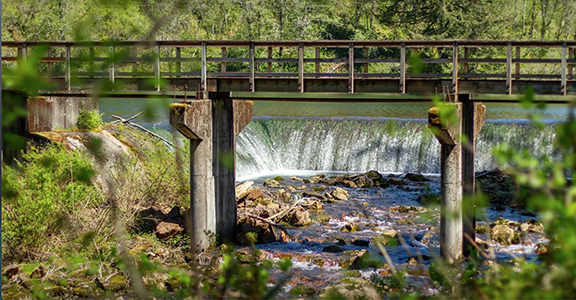||| FROM THE SEATTLE TIMES |||
WILDBOY CREEK, Washougal — Kwoneesum Dam once had a purpose. It created a lake for girls attending a summer camp to swim, canoe and sail. But just two decades after the dam was built in the mid-1960s, the camp closed, and the land was sold to a timber company.
Ever since, it has obstructed this tributary of the Washougal River east of Vancouver, blocking 6.5 miles of habitat for coho salmon and summer steelhead — fish that have nourished citizens of the Cowlitz Indian Tribe and other Native nations in the region for generations.
Kwoneesum is just one example of the dams that have outlived their usefulness. These aging structures, dubbed “deadbeat dams” by some working toward their removal, choke off habitat, and threaten homes in some instances. It’s a problem gaining more recognition across the country.
“Most dams are built for a community need. Big ones serve a state or a region,” said Cowlitz Indian Tribe spiritual leader Tanna Engdahl, as sunlight filtered through her woven cedar basket hat while she faced a crowd at the Kwoneesum Dam site last month. “I call this a vanity lake — created for a very small segment of the population. And its use is long past its privileged date.”
Many of the smaller old dams blocking watersheds throughout the Pacific Northwest were built for hydropower but no longer churn out electricity because they became too costly to operate. Others were used for irrigation or drinking water — or for recreation or aesthetics.
**If you are reading theOrcasonian for free, thank your fellow islanders. If you would like to support theOrcasonian CLICK HERE to set your modestly-priced, voluntary subscription. Otherwise, no worries; we’re happy to share with you.**








